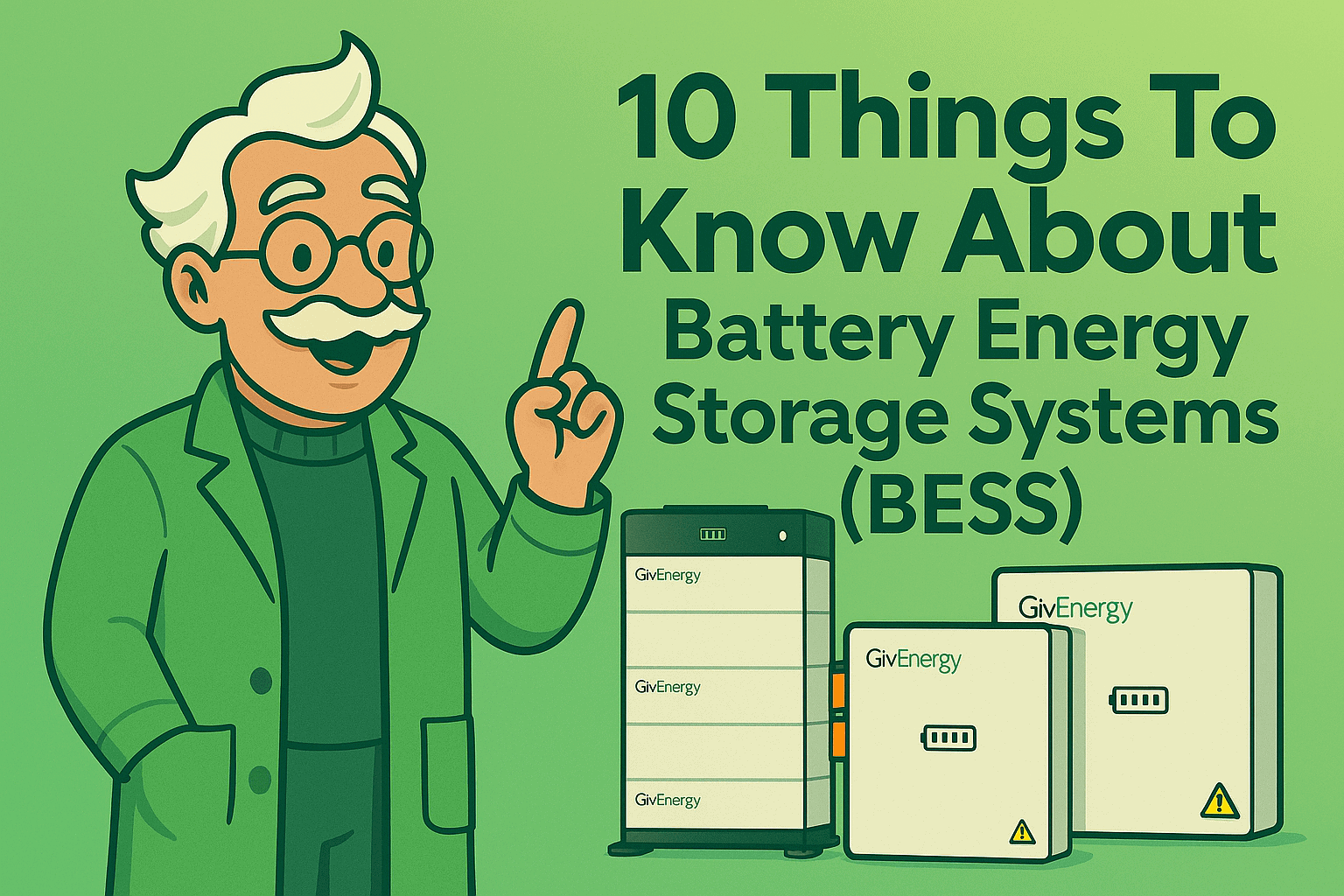Why Depth of Discharge (DoD) is essential when evaluating home battery systems
As more UK households invest in solar panels and battery storage, energy terms like Depth of Discharge (DoD) are becoming part of the mainstream vocabulary. But what does it actually mean, and why should homeowners or installers pay close attention?
To put it simply: DoD is to batteries what cost per square foot is to real estate. You wouldn’t judge a property’s value based on size alone, you’d assess the cost per usable area. The same logic applies to batteries: it’s not just about price or total capacity; it’s about how much of that capacity you can actually use.
A Quick Primer on Battery Basics
Home batteries work by storing energy, either from your solar panels or the grid (during cheaper off-peak times) and releasing it when needed. This helps reduce your energy bills, increase independence, and provide backup during power cuts.
Each battery is rated in kilowatt-hours (kWh), representing how much energy it can store. But here’s the catch: not all of that energy may be accessible. That’s where Depth of Discharge (DoD) comes in.
What Does Depth of Discharge (DoD) Actually Mean?
Depth of Discharge refers to the percentage of a battery’s total capacity that can be used before it needs recharging. For example:
- If you use 5kWh from a 10kWh battery, that’s a 50% DoD
- If you use the entire 10kWh, that’s 100% DoD
Many batteries restrict how much of their capacity can be used to preserve their long-term health. Others, like GivEnergy systems, are engineered with advanced LiFePO₄ (Lithium Iron Phosphate) chemistry, enabling safe usage up to 100% DoD, without compromising lifespan.
How DoD Affects Real-World Value and Performance
The deeper you discharge a battery, the more strain it puts on its cells. Some chemistries can’t handle full discharges without degrading quickly. That’s why some brands limit DoD to 70–80%, leaving a significant chunk of the battery unused.
This brings us to a key point: not all batteries deliver the same usable energy per pound spent. Just like in real estate, where cost per square foot matters, the cost per usable kilowatt-hour (kWh) should be your guiding metric.
🧮 How to Calculate What You’re Really Paying Per Usable kWh
When comparing battery systems, use this simple formula to find out the actual value:
💡 Cost per usable kWh = Battery Price (£) ÷ (Battery Size (kWh) × DoD (%))
| Battery A | Battery B | |
| Total Capacity | 10 kWh | 10 kWh |
| Depth of Discharge | 70% | 100% |
| Usable Capacity | 7 kWh | 10 kWh |
| Battery Price | £5,000 | £5,000 |
| Cost per Usable kWh | £5,000 ÷ (10×0.7) = £714 | £5,000 ÷ (10×1.0) = £500 |
Result: Battery B offers far better value, £500 per usable kWh vs. £714.
By applying this formula, homeowners can make far more informed purchasing decisions—comparing apples with apples instead of falling for surface-level specs.
Why GivEnergy Systems Lead on DoD and Value
GivEnergy home batteries are designed to give you full performance with full transparency. That means:
✅ 100% Depth of Discharge
✅ LiFePO₄ chemistry for stability, safety, and long-term performance
✅ 12-year warranty for peace of mind
With GivEnergy, you’re not just buying capacity—you’re unlocking every kilowatt-hour, every cycle, every pound of value.
In Summary
- DoD = The percentage of battery capacity you’re actually able to use
- Higher DoD = More usable energy and better cost-efficiency (if supported by battery chemistry)
- Cost per usable kWh = The real value comparison metric every consumer should be using
- GivEnergy = Engineered for full DoD, long life, and better returns on your energy investment
Want to maximise your energy independence and value?
Explore GivEnergy’s full range of home battery systems—designed for 100% DoD, peak efficiency, and smart long-term savings.





